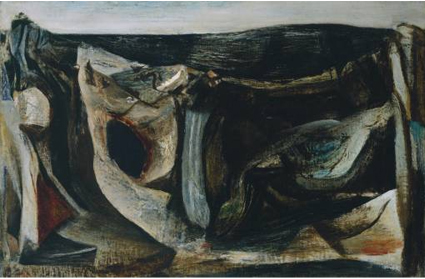HE WAS A painter but would have preferred, he said, a life in motor-racing. ''I would love to paint a beautiful picture to make quietness such as I find in the sky,'' he wrote, ''but I still like to thunder down the road doing a ton in a missile on four wheels.''
Peter Lanyon died in a gliding accident in 1964. His career, by contrast, had just taken off. He had begun to show paintings regularly in New York and his work, unlike that of most English painters of his generation, was received with enthusiasm in America. He was 46 years old.
The story of Lanyon's posthumous reputation is interesting because it offers so clear a case study of the traditional failure of the English to recognise and broadcast the achievements of their modern artists. Lanyon, who had taken up gliding because he wanted ''to find another way of organising the space in a picture'', was the Icarus of post-Second World War English art. This made him perfect source material for the kind of publicity drive that attended the work, the lives and spectacular deaths of major American abstract painters like Mark Rothko or Jackson Pollock. But it never materialised.
Lanyon knew Rothko and had him to stay in St Ives in 1958. Rothko was looking for a chapel to decorate in West Penwith. Had he been successful, the major late Rothkos that are gathered in the gloom of the Rothko Chapel in Houston, Texas, might now have been in this country. Maybe, too, some of Rothko's reputation might have rubbed off on Lanyon. But this did not happen. Besides, Lanyon had the misfortune to be English. After his death his work was received in a very English way: polite neglect, accompanied by a certain regret that he had died...


